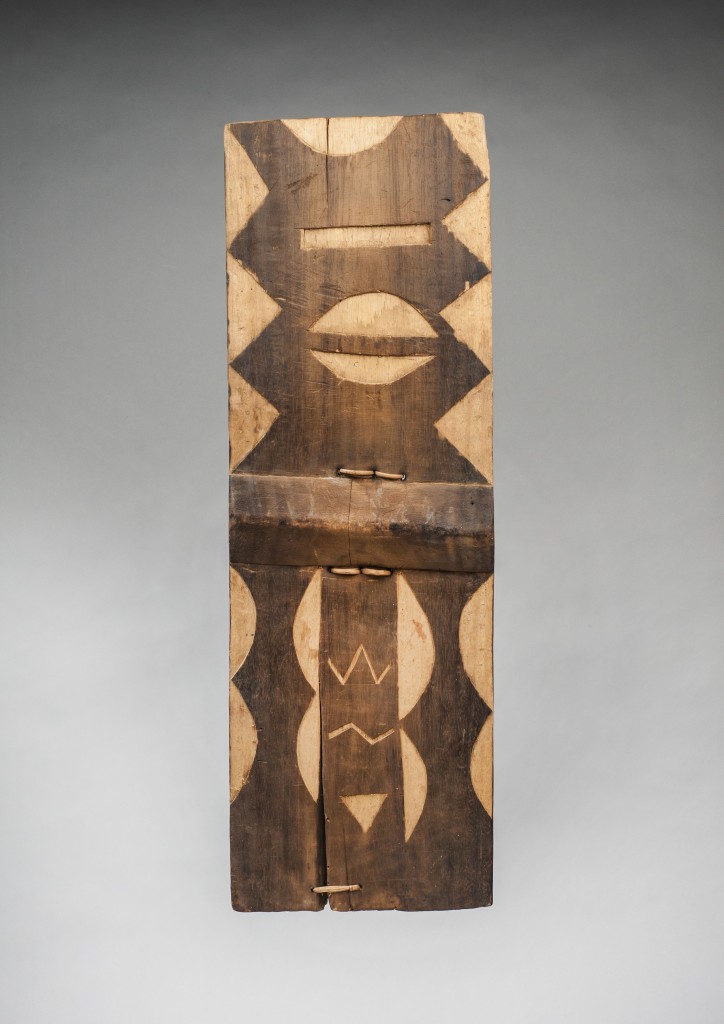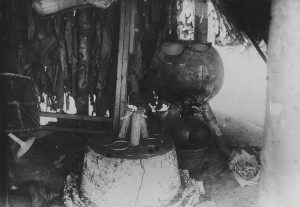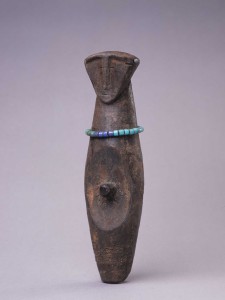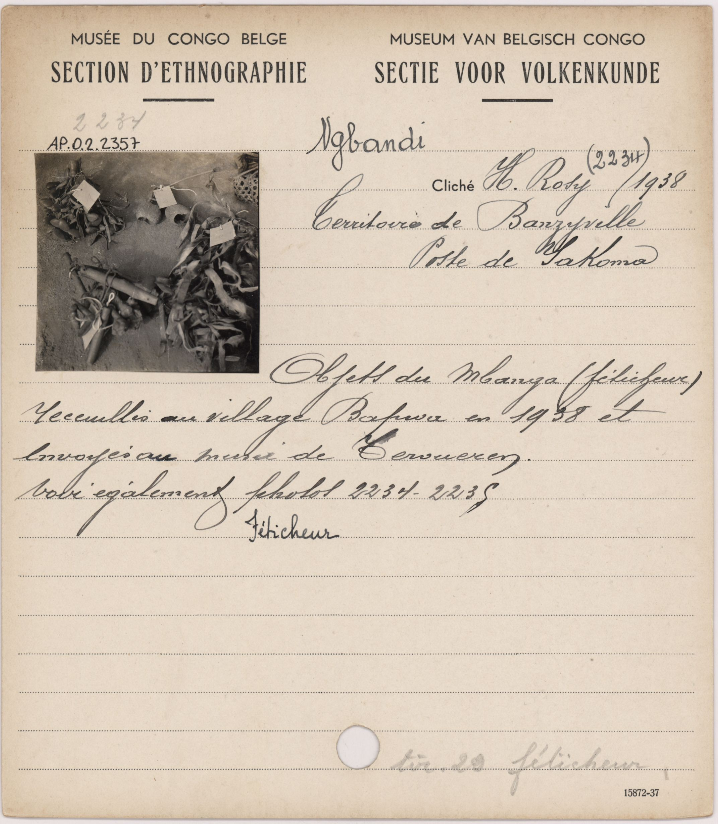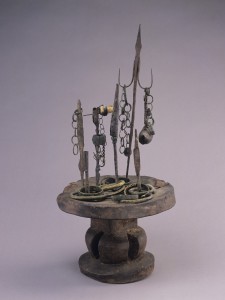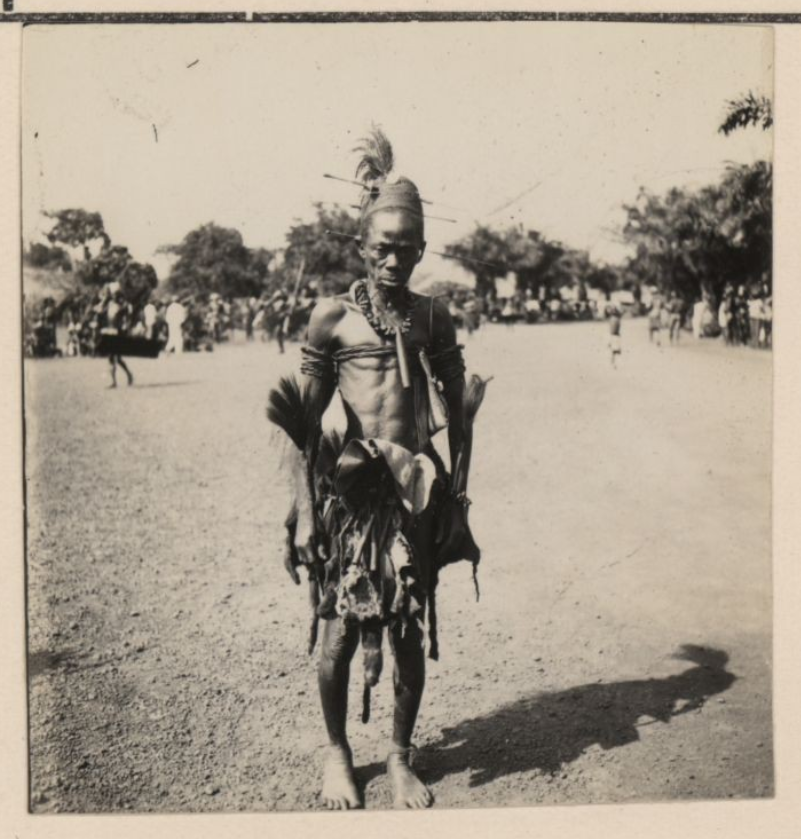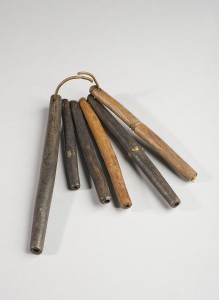Research by Vicky Van Bockhaven
This part of the research focuses on movements or institutions giving access to “dawa”, a charm or magic substance which is used to protect, to harm and to heal. Membership was acquired through initiation. These played an important role in the history of north-east Congo, but are poorly known today. Such phenomena particularly occurred in the early colonial era, but reached beyond this time-span, resonating with therapeutic institutions elsewhere in Africa. Throughout history dawa have been very important in helping people to accommodate to changes in society. They were focused on curing or solving social crises, providing protection against all kinds of harm, and guarantee well-being and success. Therefore they became more numerous under the slave trade, the colonial conquest, and the colonial administration. But they also existed prior to colonization, and continued to play a role in history until today e.g. as war charms of militia groups such as the simba in the 1960S and the mai mai today.
One of the major associations is nebeli which covered a large territory on the border between north-east Congo and South Sudan. It existed longest among the Mangbetu (approx. 1850s-1990s), from where it probably spread to neighbouring populations. Besides nebeli, there were many other dawa in the same region crossing the border between different colonies (e.g. mani, yakan, kpira, saura, siba, mongbwalu, mbanga). Most of these were hardly documented before they disappeared again, while some became quite influential and spread over large distances, like nebeli, mani or yakan. Objects of several of them ended up in museum collections and are used in this project as sources to study them in combination with archival documents, field photographs and fieldwork.
The dawa institutions took the form of closed associations, giving access to esoteric knowledge, medicinal substances and charms, organizing their initiations and meetings in isolated lodges in the forest. Starting off as volatile movements their survival and sedentarisation in a community depended on their perceived efficacy in solving social problems. This also determined their relation with the community, whether they only existed in the margins of society, or whether the majority joined. They could easily adapt to various contexts, settling in both centralized and segmentary societies. The use of the dawa shifted between harming, healing and protecting people. They were used on a day-to-day level, but also for more important causes. They were used to deal with all kinds of issues, e.g., to heal people from different illnesses or shortcomings, to be wealthy and successful in different undertakings as diverse as hunting and business, to win wars and ward off attacks. During the colonial era implements such as the dawa or magic substance, and the whistles of nebeli were used by people so as to be treated beneficially by the colonial administrators, or to escape punishments.
Approach
Nebeli and similar associations were considered as threatening by the Belgian and British administrations alike. They were rendered unlawful for being superstitious, for entailing violent aspects, and for having the capacity of mobilizing people in undesired ways. Most of the time missionaries strongly opposed them as well. Their suppression (at least partly) caused them to stay under the radar. As a result they were documented in fragmented ways, and escaped scholarly scrutiny in later decades. With ethnic groups or linguistic communities being considered as distinct units of study, larger networks such as nebeli, spanning various of these, and cutting across colonial boundaries, were overlooked. Disjunctions in perception tied in with the failure to contain their dynamic and versatile nature in Western institutional categories. Scholars had difficulties to decide whether these were religious, political or even economical, partly due to the diversity in manifestations in different time-frames. As a result they were treated fragmentarily from diverse disciplines, providing them with various scholarly denominations (e.g. cults of affliction, religious movements or sects, primary resistance, …). Recently they were mostly seen as collective therapies (Janzen), or more specifically therapeutic insurgencies (Hunt) especially in view of resistance against colonialism.
The reason why dawa were feared by the colonial government is also the reason why they merit to be studied: They were a powerful means in politics, because they could mobilize a lot of people to fight for a cause, to change their situation, and to protect and defend themselves. This explains why dawa charms or magic substances remained a vital feature of later forms of resistance in light of the independence but also more recently (e.g. kitawala, simba, mai mai). Such phenomena provide an interesting viewpoint from which to explore how people were dealing with a changing environment, undergoing Sudanese and Zanzibari slave and ivory trade, military conquest and colonization in a short time-span. As manifestations of creativity and agility in a shrunken milieu (Hunt), they are representative of local political culture throughout time. The agility reflected in micro-historical cases also helps to understand the institutional dynamics and diversity in manifestations throughout Central Africa. A special focus on objects is helpful in understanding the dialectics behind the confiscation of the charms by missionaries and colonizers, but more importantly also in how local people used these in protective and aggressive ways in the regulation of social relations.
Role in political history: healing and power
Dawa associations are a specific form of therapeutic institutions culturally reminiscent of more widely spread collective therapies described by Janzen. Janzen as well as other authors suggested that the quest for healing driving these collective therapies and the ritual authority emanating from them was a crucial force in the development of political institutions in Bantu cultures throughout Central, East and South Africa. The interrelations between political authority and healing as social reproduction and averting misfortune caused by supernatural powers is crucial.
The dawa associations and their leaders could either consolidate, or contest the authority of local chiefs or colonial authorities whenever things were going the wrong way. Chiefs had to inhibit them by providing sufficient counter-weight or appropriate them by becoming members, by tying their ritual specialists to them, and absorb them in dualities of power; or simply by crushing them. If nebeli entered Zande society as a counter-hegemonic force, arming common people against the arbitrariness of their rulers, and was eventually usurped by the latter, its trajectory in Mangbetu history developed the other way around, from being a war charm adopted by rulers from subjected people to a potential source of counter-hegemony. In the segmentary society of the Bali, to the south of the Mangbetu kingdoms, the dawa of nebeli played a role in the rubber tax strikes of 1907 giving people courage to resist the forced rubber collection as they believed the dawa would turn the bullets of the colonial army into water.
When incorporated into the bureaucracies of colonial rule, customary chiefs were forced to renounce and fight many of such supernatural, remedial practices they actually needed to be in control of, in order to sustain their legitimacy and keep people in check. If customary chiefs, ruling on behalf of the colonial government, were forced to renounce such means, many of them –as well as their adversaries- used these remedies to keep control over people, have them perform labour duties and pay their taxes, as was the case among the Zande in the 40s and 50s. What came to be seen as contestation in colonial and postcolonial times should also be re-considered as the continuation of processes characteristic of local political culture. Insights in these processes in the past are important for understanding politics today.
